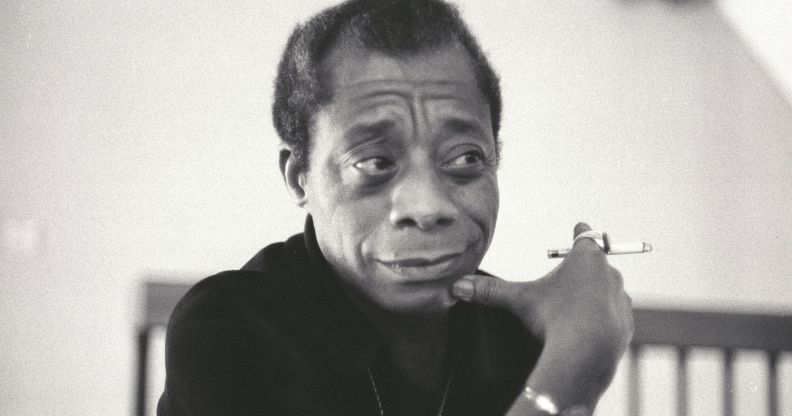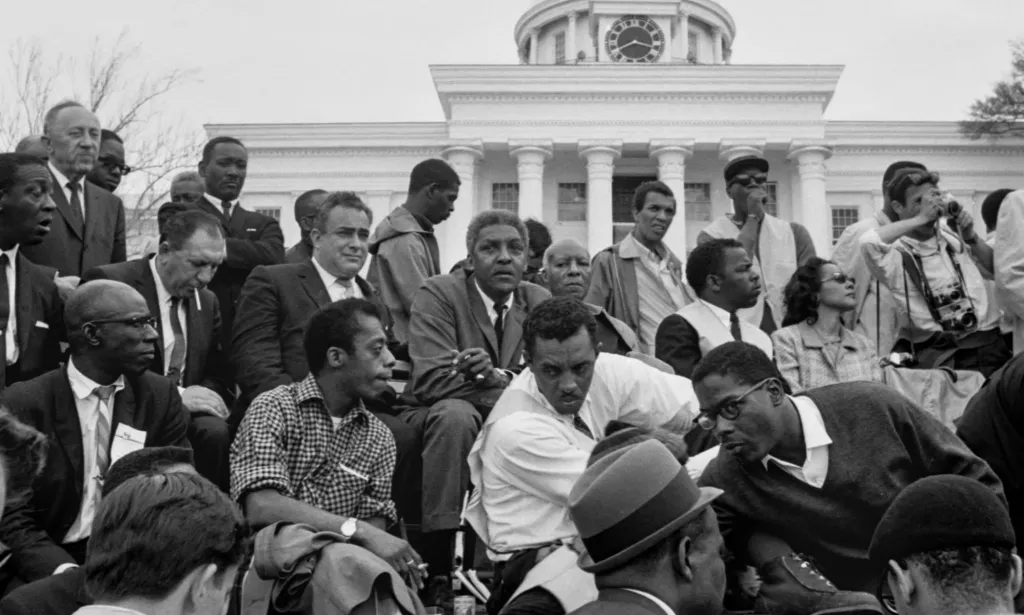Remembering trailblazing LGBTQ+ civil rights activist James Baldwin this Black History Month

Baldwin died at the age of 63. (Getty)
Black History Month in the US started this week, coinciding with LGBTQ+ History Month in the UK, to celebrate the achievements and legacy of Black trailblazers and activists across the years.
James Baldwin in particular was celebrated in a Google Doodle yesterday (February 1) both to kick off Black History Month and to commemorate the anniversary of the publication of his Collected Essays, which explored a variety of social justice-related themes and issues.
Baldwin’s niece, Darlene Burnett, said she was “grateful” for the doodle celebrating “Black History Month and the centennial anniversary of his life”.

“Decades after his death, it is clear that Jimmy’s extensive body of work holds its impact of eternally breathing into spaces that will be stirred by the gravity of his intellect and acquaint the power of his words for generations to come,” she added.
While it’s clear that Baldwin’s legacy is intact for some, at the same time there are many who may not have heard of him. We’re here to help: read on to find out more about this true LGBTQ+ hero.
Who was James Baldwin?
Born in 1924, James Baldwin was a civil rights activist and writer who grew up in the borough of Harlem, in New York City. He was born to a single mother, who later remarried a man called David Baldwin and had a further eight children.
According to his official biography by David Leeming, Baldwin moved to Greenwich Village at the age of 19 after spending several years torn between his desire to write and his need to provide for his family. Baldwin took a number of menial jobs but he was not very successful at them, drifting from job to job after being fired multiple times.
While living in Greenwich Village, he published essays and short stories while working on a novel and later secured a fellowship to live in Paris and work on his writing.
Baldwin died in 1987 at his home in St Paul de Vence, France, from stomach cancer.

What was he known for?
Baldwin was known for his activism during the height of the civil rights movement in the 1960s, and his poignant writing about race relations in the U.S, as well as writing about sexuality and sexual oppression.
After living in Paris, Baldwin moved back to the US in 1957 and became a well-known figure in the civil rights movement, becoming friends with Martin Luther King and Malcolm X. His work during this period focused on issues of race and oppression, and he took part in the historic march in Washington on August 28, 1963.
Baldwin’s most famous works include novels like Go Tell It On The Mountain, Giovanni’s Room, and If Beale Street Could Talk, as well as essay collections like Notes of a Native Son, Nobody Knows My Name, and The Fire Next Time.
Go Tell It On The Mountain was Baldwin’s debut novel, a semi-autobiographical story that took the writer 12 years to complete. It was later recognised by Time magazine as one of the 100 best English-language novels of the last century.
Notes of a Native Son and Giovanni’s Room were both notable for their portrayal of homosexuality, released decades before the gay liberation movement began.
If Beale Street Could Talk focused on race relations and was later adapted into an award-winning film of the same name, directed by Barry Jenkins, who also directed Moonlight.
Was James Baldwin gay?
Baldwin resisted labels about his sexuality, but had relationships with both woman and men. In his works, he wrote extensively about homosexuality and relationships between two men, as well as advocating for trans and non-binary identities.
He never married or had children, though the National Museum of African American History (NMAAHC) says he always wanted children.
However, he is commonly referred to as “gay” by academics. Michelle Gordon, a visiting assistant professor of African American studies at Emory University, said:
“Being Black in America. Being Black and gay in America. Being a Black American in Europe. Being Black and gay in the world. It all gives him outsider status, which allows him the ability to see the world so clearly, because he did not quite fit.”
Until his death, Baldwin sought a man with whom he could settle down with and build a home, family, and life with – though this never happened – again, according to NMAAHC.

